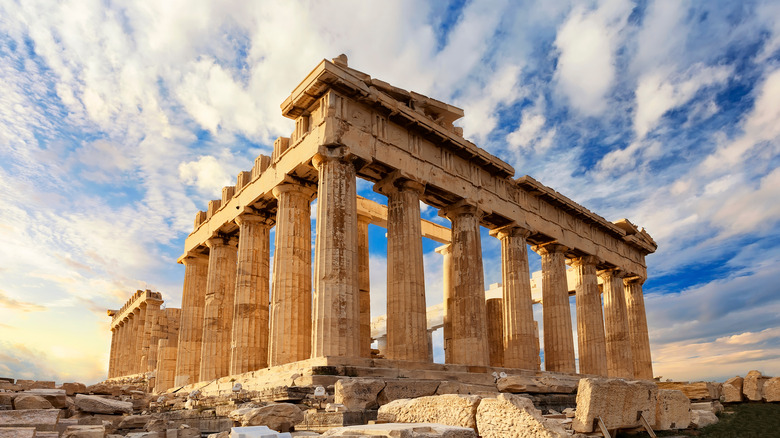The Mythology Behind The Libra Constellation Explained
Libra, the seventh sign of the zodiac and the constellation lying between Scorpius and Virgo, is either represented by a woman holding a traditional balance scale or by the scale alone, according to Britannica. Fittingly, the name "Libra" means "balance" in Latin, though as Space points out that if the constellation is seen as a set of scales, those scales are in fact not balanced, but tilted toward the right side.
When ancient astrologers invented the zodiac, Libra was positioned at the autumn equinox, which perhaps is why the constellation is seen as a set of scales — equinoxes are the two times of year in which night and day are the same lengths, or perfectly balanced. In fact, Libra is such a retconned constellation that two of its stars were originally part of Scorpio and only joined Libra because astrologers wanted to make the constellation look more like scales. These stars are named Zubeneschamali and Zubenelgenubi — literally meaning the "Northern Claw" and "Southern Claw" of the scorpion. (Is this a good time to remind you that constellations are not actually based in science, and are more comparable to the process of looking at a cloud and picking out shapes? See this Britannica entry.)
The last god among humans
Over its history, Libra became associated with a few myths, according to Dark Sky, particularly based around the concepts of justice and commerce (scales were and are an important tool for trading bulk goods).
According to Britannica, the woman holding the scales is said to be Astraea, a Greek goddess of justice. When the earth became overrun with wickedness, Astraea was the last of the gods to remain among humans before departing to live among the stars, according to the Roman writer Ovid in his "Metamorphoses" (via The Metropolitan Museum of Art). In Ovid, she is depicted as becoming the constellation Virgo, but other myths have her turning into Libra. According to Gods and Monsters, it's sometimes understood that the maiden of Virgo holds the scales of Libra.
Astraea is associated with more earthbound myths as well. It's said that after she fled earth, all of humanity was destroyed in a flood except for two humans (via University of Vermont). When Astraea cried for these humans, her tears hit the ground and became asters — starflowers.

